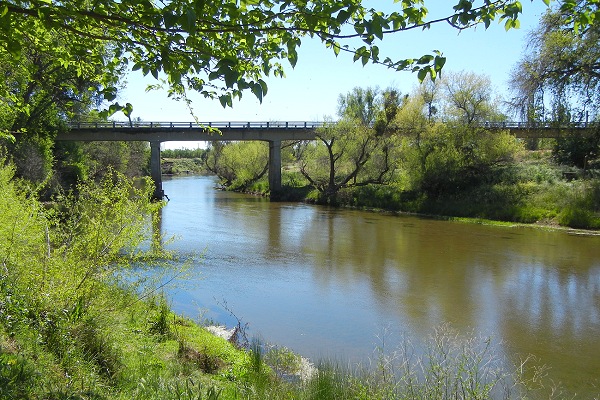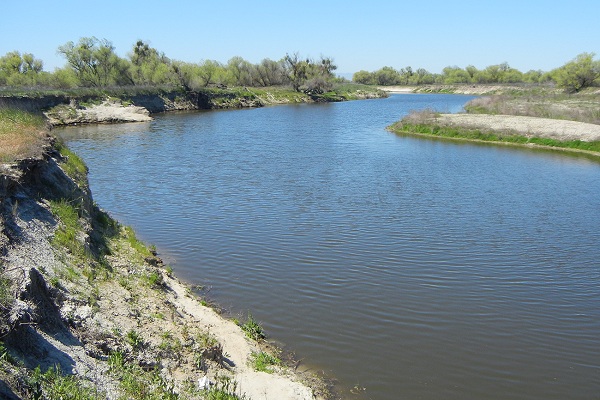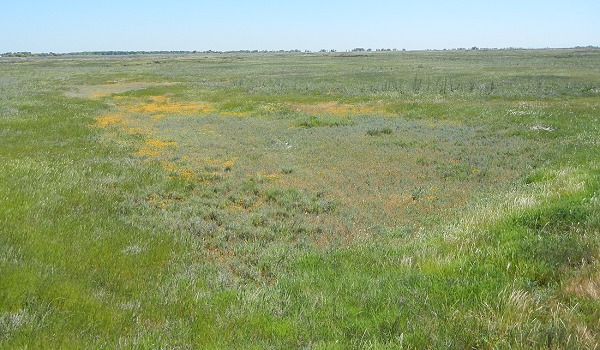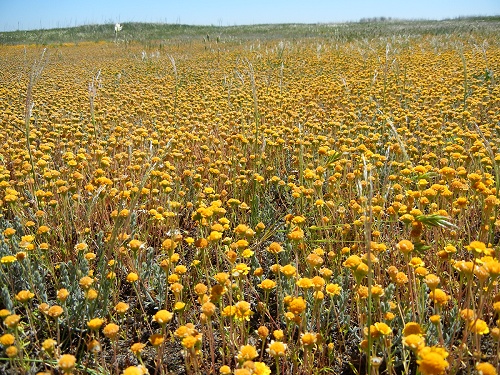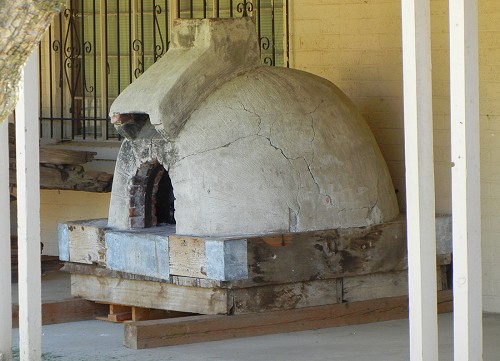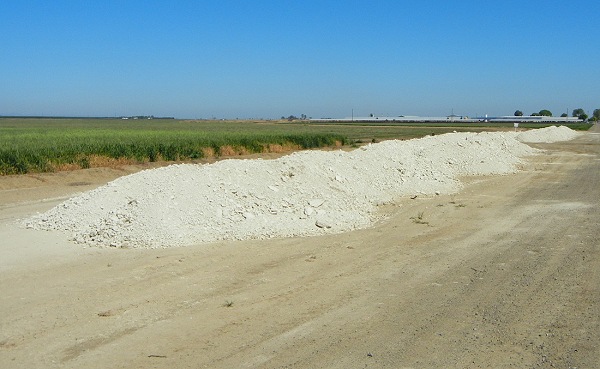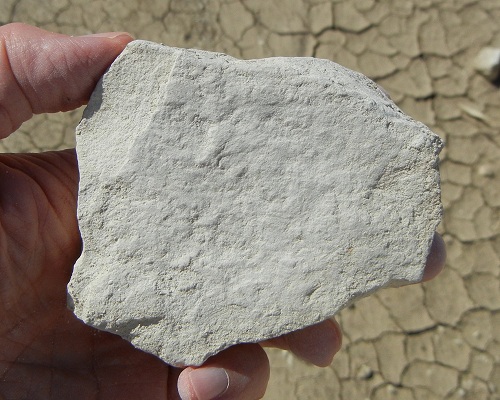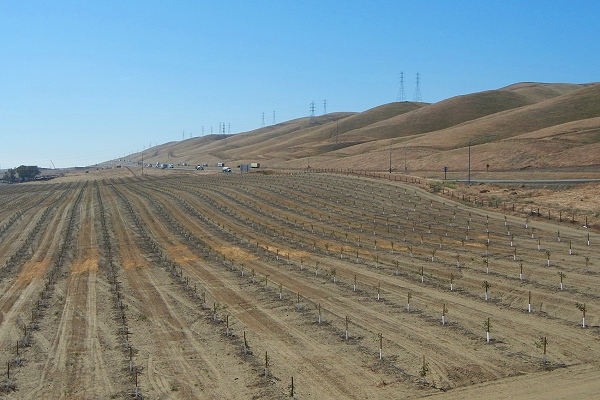Springtime is my favorite time to see the floor of the Great Valley. If the weather is fine, the temperatures are moderate and the mountains on both sides of the valley—the Coast Range and the Sierra Nevada—are visible wherever you can get a clear view of the horizon. Such were conditions when I took this side trip from I-5, which leaves the freeway at the Patterson exit, in Stanislaus County, and returns to it at the Mercey Springs Road exit, in Merced County. Along the way it crosses two of the Valley's major rivers and the heart of its wetlands. Both ends are at the dramatic uplifted front of the Coast Range, exposing the thick section of sedimentary rocks that lie beneath that flat valley floor and record its history.
Here's the route along with the geology (made, as usual, with the help of the interactive state geologic map).
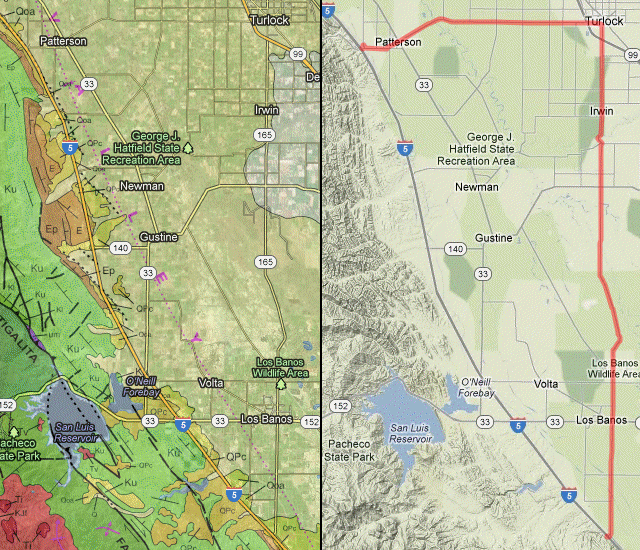
Drive through Patterson and get on Las Palmas Avenue. This may be the Valley's grandest allee of palm trees, although there's another one near Chowchilla you could see in another I-5 side trip. (Note to geologists: Turlock has an excellent brewpub if your trip calls for one.) Once out of town, you enter some of California's hardest-working farmland, based on excellent soils and abundant water.
South of Turlock, keep an eye on the roadside and notice as the soil turns sandy. Just below the "165" mark, you cross the Merced River, which is responsible for all that sand, marked on the geologic map by the lighter patch. Here Hagaman County Park offers a good view of the river, which still flows at a good clip all this way from Yosemite Valley. Notice, too, the levee north of the river, which keeps the annual floods from spilling wide over the countryside.
